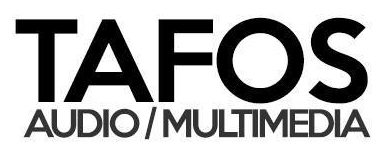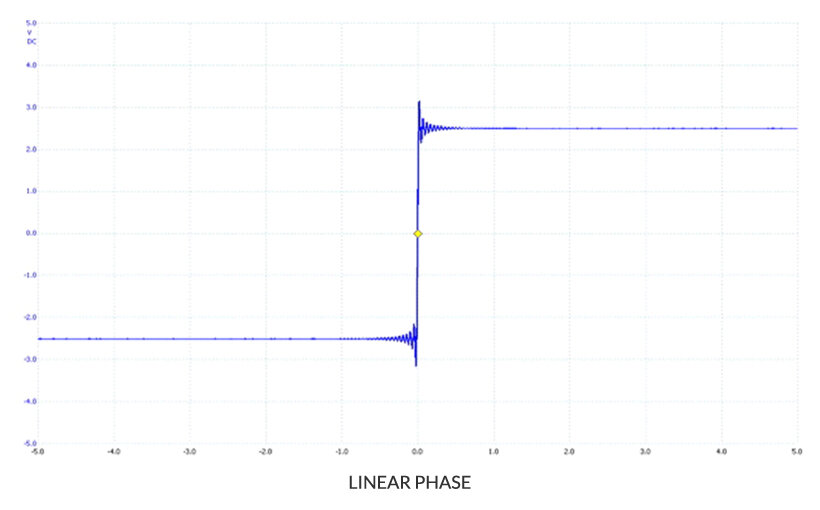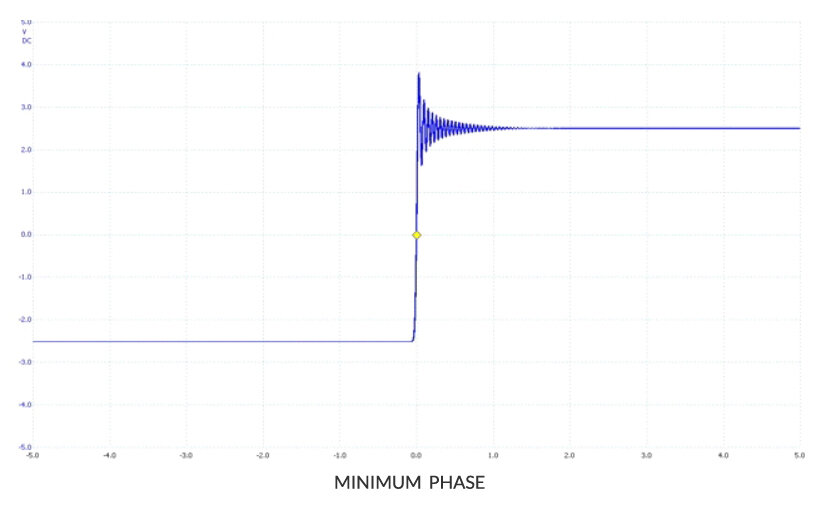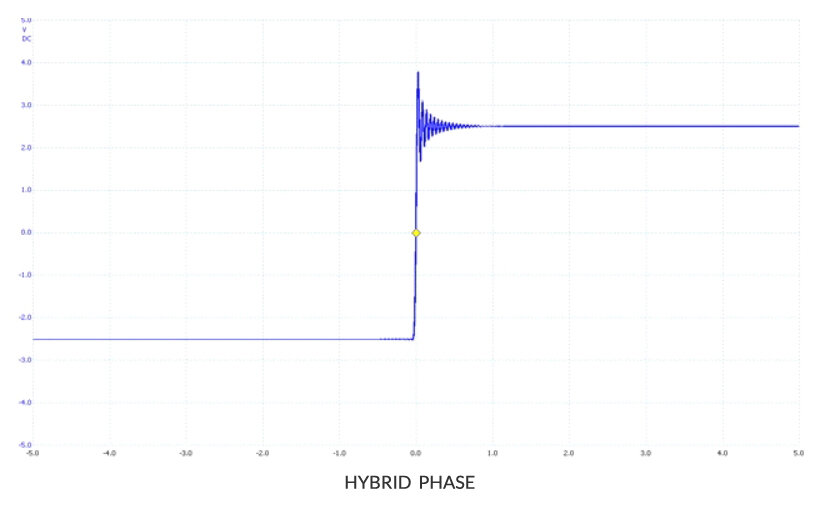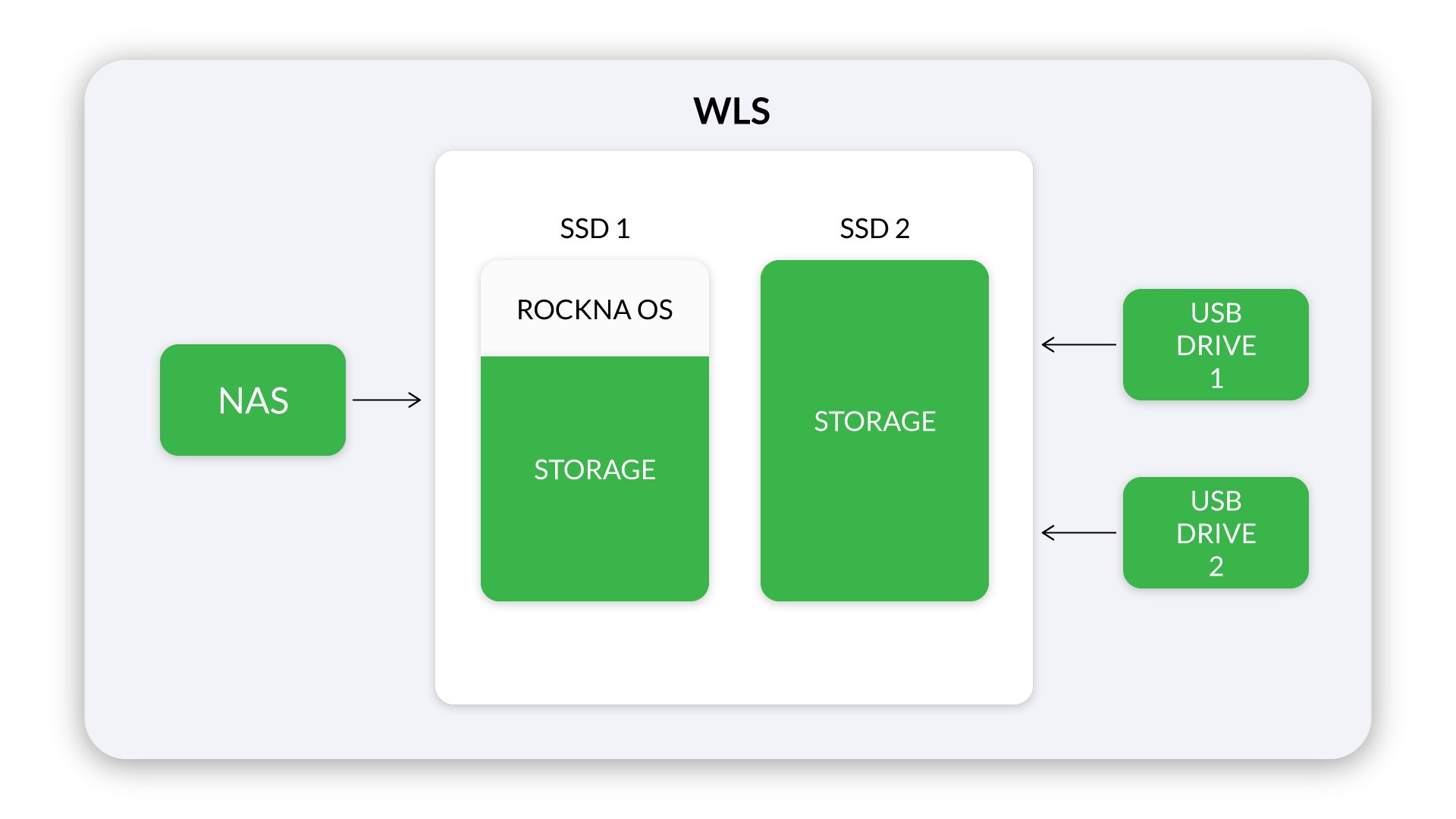Tafos Audio - Autoriziran distributer Rockna - Audiobyte za hrvatsko tržište
ROCKNA AUDIO was founded in 1999 as a quest for insightful, enjoyable, inspiring music reproduction. Since then, a remarkable evolution happened in our company which is not going to stop. Our whole team is driven by the common passion for technology. A passion which will never let us make any “me-too” products. We want to offer an option – a different one – to show that things can be done different.
WHAT CAN YOU GET FROM US? You get an original product, entirely made in our labs (no overseas assembly) with internal structures built literally from the scratch, avoiding as much as possible off-the-shelf solutions. Because we can’t follow the limits imposed by them. We like to think free. Below is a short history of our legacy products. We are honoured by your presence here and we invite you to enjoy the music through our devices.
If you are looking for high-end audio as it should be, you may be in the right place.
Let’s bring back innovation, consistency and common sense applied to design and technology.
Nicolae Jitariu
Founder Rockna Audio
WAVEDREAM REFERENCE
TRANSCEND REALITY
10 years ago, we launched the Wavedream DAC, a device that has defined our identity and left a mark on the discerned audiophile. The Wavedream Reference is more than an evolution of our DAC, it elevates the story of our company and team because it pushes the limits of custom digital to analog conversion through proper engineering, performance, design and sound quality. As a culmination of years of experience and with so many technological advancements, the Reference warranted a complete makeover of the Rockna brand, it is just that special.
Each relevant component or subsystem of the Reference is defined by Rockna proprietary hardware and custom software. We accepted no limitations from off-the-shelf solutions like DAC chips, OEM streaming modules or signal op-amps. As always, we stayed true to our philosophy of presenting products with a high degree of originality and elegant technical solutions.
HARDWARE ARCHITECTURE
At the heart of the Wavedream Reference is our custom architecture, crafted for the highest level of precision and ultimate refinement in audio reproduction. Our DAC is built upon a highly optimized and efficient AMD/ZYNQ chip for master control/network renderer and 4 FPGAs, one for each phase of the discrete conversion system. The machine runs a Rockna custom tailored Linux system which takes care of everything except audio processing - which is executed by the dedicated hardware blocks.
To achieve an elegant internal layout, we designed a 10-layer central core board for the digital front-end processing and the network renderer. A completely new dedicated low noise supply board was developed, as well as new conversion boards placed in a symmetrical configuration, two for each channel. Compared to the classic Wavedream, the design was optimized by shortening the clock and data signal paths and by using higher quality board-to-board connectors. Therefore, signal integrity was significantly improved. Furthermore, the toroid transformers and the display are shielded internally using a copper cage. The analog stages following the D/A conversion modules are hidden on the back of the left and right boards.
The Rockna philosophy for an exceptional DAC is mastering the art of connecting mixed-signal technologies in such a way that the output preserves all the fine nuances of the original recording. Many think the secret is proper digital processing, but that is just one piece of the puzzle. When moving the audio information from digital to analog domain, the clock system plays a critical role in giving a sense of realism, analog sound and creating audio 3D imagery. Most D/A converters take the easy route by relying on the ASRC (acronym for asynchronous sample rate converter) built in the chips they use. While the ASRC may have a sound signature in itself, the quality of the ASRC implemented in DAC chips is affected by cost and silicon real-estate, thus being prone to sound quality degradation.
In the Wavedream Reference we developed one of the most advanced, ASRC-free digital PLL clock solutions which gives the DAC the ability to perform like an analogic source, with a natural sense pf pace and rhythm. Another key element is that digital signals physically travel as high-speed analog signals and they must be treated accordingly. Bits are bits on an abstract level but on pcb traces, connectors, cables they are a succession of high-speed rectangular analog signals which are not perfect: they have rise-time, fall time and they could be plagued by ringing, spikes, reflections, crosstalk, phase noise(jitter) etc. This is why Rockna has perfected radio-frequency techniques to mitigate these issues which have the potential to ruin the pursued analog sound.
WAVEDREAM DAC
HYBRID POWER SUPPLY
The complexity of the Reference power supply is shown in the below diagram. We had to perfectly balance the efficiency, internal real estate and the need for ultra low noise required for the DAC performance. Over 20 power-related circuits drive over 90.000 uF of capacitance. The audio grade toroid transformers are hidden under a thick copper sheet which acts as a shield.
DAC modules
For the D/A conversion stage we developed a evolved version of the mighty DAC modules used in the classic Wavedream DAC. The modules themselves are complex pieces of technology, sharing a discrete sign-magnitude hybrid ladder topology, driven by a complex algorithm which is embedded into their own FPGA. They can sustain sample rates up to a few MHz and the output of the DAC modules is un-buffered, allowing maximum transparency and natural sound reproduction.
ANALOG STAGE
The last stage of the signal path is the analog output stage. It’s contribution to the final sound is of extreme importance. Designed from the scratch to work with the new conversion modules, the output stage is totally discrete and acts as a high-speed buffer, while keeping the circuit simple enough to achieve full transparency. We combined JFET & bipolar devices into a class A design, with a low closed-loop output impedance and very low noise, as a perfect match for the overall performance of the machine.
DIGITAL FILTERS
The internal FPGA up-samples any material to a fixed rate of 16x. The DAC modules will decode the digital stream with a rate of 768Khz, or 705.6Khz, respectively, according to input sample rate. We found this rate to be optimal for analog performance of the DAC modules. Behind this simple multiplication factor lies significant processing power. The digital filters are made with the combined effort of multiple DSP blocks working in parallel.
After lots of mathematical simulations and careful listening tests, we have created a custom Parks-McClellan up-sampling filter. There are three variations available : linear, minimum and hybrid phase. They are highly optimized filters, offering stunning performance with a large number of taps, offering excellent filtering capabilities, and they are different in regard of impulse response. For the linear phase, the ringing energy (Gibb’s overshoot) is equally split before and after impulse. Minimum phase type shows all this energy after impulse, while our special hybrid phase filter has a combined response between linear and minimum, exhibiting very low overshoot before the impulse.
NETWORK RENDERER
The network renderer built inside Reference is unique not only because is our proprietary approach, but because it is seamlessly integrated into the DAC digital front-end. There is no separate “streamer section” or extra board, which removes the need for a dedicated external connection and unnecessary obstacles into the digital signal path. Natively integrated inside the Rockna ZYNQ SoC, the renderer can truly shine, allowing perfect sonic performance when selected.
POWERFUL CONTROL
Clean user interface and simplicity in use is a part of the Reference experience. Our team put a lot of effort in designing a proper user interface. There are three options to control the device: the front-panel touchscreen display, the classic infra-red remote and the Reference mobile apps, available for iOS and Android.
Remote control
In addition to the touch control display, the machine can be controlled using a classic remote control and mobile apps for Android and iOS.
The remote is metal-made with illuminated keys and movement sensors.
wAVEDREAM REFERENCE
Hardware
AMD ZynQ SoC with custom Rockna firmware
R2R discrete DAC modules RD-1 MK2 x 4
27-bit FPGA driven combined switches
Optimized clock manager Femtovox 2
Mirrored clock distribution
Low-noise and fine-tuned power supply
Local regulation on critical nodes
Discrete regulation for analog stages
Very large capacitor buffer
Copper shielded audio grade transformers
Critical paths with tight impedance control
Hardware FPGA upsampling
Proprietary Digital-PLL topology, ASRC-free
Fully discrete output stage, standard version
32-bit ultrafine volume control
LAN, USB, I2S, SPDIF, AES/EBU, Toslink inputs
RCA and XLR outputs
THD -100 dB (-3 dB); DNR 125 dB
MAX. OUTPUT 2.3V RMS (RCA) 4.6V RMS (XLR)
Full aluminum chassis, matt black or matt silver
Dimensions: 450 x 390 x 105 mm, 10 kg
Software
Rockna custom Linux kernel
Roon bridge, Upnp, OpenHome
Airplay, HQPNAA, Spotify Connect
Fully configurable I2S input port
Selectable DSD bandwidth
Android & iOS mobile control app
Firmware updates over internet
WAVEDREAM REFERENCE SIGNATURE
Hardware
AMD ZynQ SoC with custom Rockna firmware
R2R discrete DAC modules RD-0 MK2 x 4
28-bit FPGA driven individual switch/bit
Clock manager Femtovox 2-LPN version
Mirrored clock distribution
Ultralow-noise and fine-tuned power supply
Local regulation on critical nodes
Discrete regulation for analog stages
Very large capacitor buffer
Copper shielded audio grade transformers
Critical paths with tight impedance control
Hardware FPGA upsampling
Proprietary Digital-PLL topology, ASRC-free
Fully discrete output stage, standard version
32-bit ultrafine volume control
LAN, USB, I2S, SPDIF, AES/EBU, Toslink inputs
RCA and XLR outputs
THD -102 dB (-3 dB); DNR 135 dB
MAX. OUTPUT 2.3V RMS (RCA) 4.6V RMS (XLR)
Full aluminum chassis, matt black or matt silver
Dimensions: 450 x 390 x 105 mm, 10 kg
Software
Rockna custom Linux kernel
Roon bridge, Upnp, OpenHome
Airplay, HQPNAA, Spotify Connect
Fully configurable I2S input port
Selectable DSD bandwidth
Output Dither
Digital PLL tracking mode
Android & iOS mobile control app
Firmware updates over internet
WAVEDREAM DAC
SOFTWARE DEFINED ARCHITECTURE
We always thought that high-end audio should be everything about innovation. Playing around with off-the-shelf available chips is fun and certainly a good and economic way to produce good sound. But once you want to design a cutting-edge product, the off-the-shelf approach doesn’t apply. Naturally, a custom solution, freed from the limitation of the available chipsets, come into place, allowing us to design and build from the scratch an entire digital audio system.
All building blocks of the Wavedream DAC concernig digital processing are built entirely on a single piece of programmable silicon – a FPGA . With a FPGA, it’s internal hardware architecture could be described by a piece of software (actually, a very complex one). When upgrading the Wavedream with new firmware, you actually change it’s hardware. This system allows great flexibility, obsolescence protection and let us improve the sound of your dac by changing it’s internal architecture, or add new cool features, or improve the existing ones.
FEMTOVOX CLOCK SYSTEM
The clock is the heart of a digital reproduction system. It’s accuracy and jitter levels are critical in regard of sound quality. Only a very good clock system can make the way to the analog sound on the output of your DAC. If the clock is flawed, digital harshness will occur and the analog feeling of the music will be severely altered. Apart from the performance of the clock itself, equally critical is the construction of the clock tree (the clock distribution architecture) inside the DAC. The jitter amount that really counts it’s not only the performance of the clock itself – but the clock which actually enters the dac and is used for conversion – let’s call it the conversion clock. The conversion clock that enters the dac section relies on the clock tree, which is usually not just routing, but in most cases conditioning, altering it’s quality. A poorly designed clock tree can degrade significantly the clock quality entering the d/a section, even if the source clock has great performance.
With these facts in mind, we designed for the Wavedream an advanced clock system called the femtovox. With femtovox in place, one is assured that only extremely small amounts of jitter are present at the dac conversion clock input. It’s unique architecture employs that conversion clock is directly synthesised at the dac input, without any conditioning, giving constant jitter performance at any sample rate. The conversion clock is controlled with 1 ppb precision, while exhibiting about 300 fS of jitter. The smallest jitter figure in the world? No. The smallest jitter figure where actually matters? Probably.
CUSTOM DIGITAL FILTERS
The Wavedream upsamples any material with a fixed rate of 16x. The dac modules will decode the digital stream with a rate of 768Khz, or 705.6Khz, respectively, according to input sample rate. We found this rate to be optimal for analog performance of the dac modules. Behind this simple multiplication factor (16x) lies a huge processing power. The digital filters are made with the combined effort of 58 DSP blocks, resulting into a impressive figure of 15 GMACS of processing power.
The developed filters are unique. We avoided standard Nyquist rate filters as not providing the expected performance for the dac. After lots of mathematical simulations and careful listening tests, we have created a custom Parks-McClellan upsampling filter. There are three variations avaialble on current firmware: linear, minimumand hybrid phase. They are highly optimized filters, offering stunning performance with a large number of taps (5k), and they are different in regard of impulse response. For the linear phase, the ringing energy (Gibb’s overshoot) is equally split before and after impulse. Minimum phase type shows all this energy after impulse, while our special hyrid phase filter has a combined response between linear and minimum, exhibing very low overshoot before the impulse.
D/A CONVERSION
For the effective D/A conversion stage we developed dedicated dac modules called RD-0 (used in Signature – 27 bit structure) and RD-1 (used in Edition – 26 bit structure). Modules themselves are complex pieces of technology, sharing a discrete sign-magnitude hybrid ladder topology, driven by a complex algorythm which is embedded into their own FPGA. Therefore the dac modules firmware is updatable both performance and feature-wise. Currently RD-0/1 can sustain a maximum sample rate of 6 MHz, which is the industry’s maximum sample rate specified for a audio dac. The output of the dac modules is un-buffered, allowing maximum transparency and natural sound reproduction.
OUTPUT STAGE
Finally, the last stage of the signal path is the analog output stage. It’s contribution to final sound is of extreme importance. Designed from the scratch to work with converter modules RD-0 & RD-1, the output stage is totally discrete and acts as a high-speed buffer. Made entirely with through-hole components (non-smd), we combined j-fet & bipolar devices into a class A design, with a closed-loop output impedance of under 1 ohm and equivalent input noise as low as 1nV, as a perfect match for the converter overall performance.
THE POWER SUPPLY
Naturally we have dedicated sections for digital and analog areas. There are 3 separate transformers, and all power supplies are low noise linear - no switchmode power supplies are used whatsoever. There are a total of 20 linear regulators inside the dac. We dedicated our attention to the dac modules regulators – which are designed from the scratch for low impedance and ultra-low noise.
EXTRA MENU FEATURES
On the dac menu can be found a series of useful features. Let’s take a short walkthrough.
The preamp feature - The Wavedream has a 256 steps volume control which allows direct connection of a power amplifier. The volume control has 0.5 dB steps for a fine resolution setting.
The phase select feature – the user can change the absolute phase of the output signal.
The filter select feature – discussed above. The filters can be switched off for NOS operation.
The clock setting – there are 2 modes of the digital PLL response, stream and local. Please reffer to the clock technical document under the technology section for more information.
Dither – to improve R2R ladder linearity, ultrasonic dither is applied on the last 4 bits from the digital 24-bit word.
CONSTRUCTION DETAILS AND INTERNAL LAYOUT
The Wavedream benefits internally from a carefully studied, full symmetrical layout. Shortest signal paths and proper design of the clock tree were our main guidelines. All off-board connections are made with LVDS standard for lowest intereference, high speed and minimal jitter.
The transformer section is internally shielded to prevent internal EMI leakage. The chassis is entirely made of black anodized aluminium with a maximum fronplate thickness of 20 mm. Switches are black ruthenium finish.
How does it sound?
BASS
The bass is incredible as it has exploding impact, excellent detail, goes very deep when it should and seems to be controlled by an iron hand. Also, it seemed very natural to me and I often had the impression I felt the material the drums were made of. I could feel the drums in my body, and no, I wasn’t using speakers, just headphones.
MIDS
One of the best mids I have ever heard in my life. All is at superlative with this DAC. Every instrument is alive and kicking and the voices are out of this world. You can hear every tone in the singer voice, every emotion, passing it to you, making you feel the song and the emotions he wants to transfer.
TREBLE
As you expect the treble is top notch as well. The sparkle is crystal clear and full of life and extension.
TRANSIENT RESPONSE
This is another breathtaking aspect of the Wavedream as it has very fast and natural decay and incredible attack.
DETAILS & MICRO DETAILS
With the Wavedream you discover a lot of interesting new sounds in your favourite songs, things you may have never heard before. Besides the obvious things you will hear improve like instrument & voice extension, sometimes an instrument playing subtle in a deep layer you have never heard before, you may hear a car passing by the recording studio or the artist scratching his face. Some say that don’t like analytical sound. Well, the good news is all those details come in a very natural way and I don’t consider the sound to become analytical. Nothing is pushed in front by force, all comes naturally. This helps passing the emotions from the song to the listener with better efficiency, as you can hear the whole extension of the instruments and all the tonalities and effort of the singer’s voice.
SOUNDSTAGE, INSTRUMENT SEPARATION, LAYERING & POSITIONING
The instruments are extremely well separated and layered. Even in the most crowded passages you don’t feel that the layers blend in, as the Wavedream seems to decompress them in a much larger scene, leaving a lot of air between the instruments. I can’t even refer to stereo presentation any longer as 3D or holographic would be a much more accurate description. Also, the soundstage is incredibly spacious and airy.
DYNAMICS & MICRO-DYNAMICS
This is another amazing aspect about the Wavedream. I often noticed some instruments in the orchestra that are meant to be subtle, it manages to do this but still gives them life. You can feel every instrument however subtle it is and however further in the back it may be.
ENERGY & TACTILITY
Some of the features from above result into something I love very much. I am referring to the tactility of the sounds. I can feel the guitar like I am plucking it myself, I can feel the drums and the material they are made of, the voice singing into my ear and sometimes feeling the warmth of the breath, the violin and cello chords vibrating. So every sound has it’s energy, however subtle it may be. You can imagine that when the song wants to be energetic, the Wavedream makes it explode with energy.
TRANSPARENCY
It transposes you in your favourite concert hall or it opens the window directly into your music and helps you lose yourself into your favourite songs.
(reproduced from Headmania Review)
WAVEDREAM NET
LOCAL, LAN AND DISC MEMORY TRANSPORT
The Wavedream NET is a unique product which adds together a high performance audio server and a latest generation, memory-based cd transport. You can enjoy your cd collection, internal storage playback or latest streaming experience from only one machine. The NET is naturally the best complementary source for the Wavedream DAC over the HDlink(I2S) connection.
FPGA-BASED HIGH PERFORMANCE AUDIO
The NET is built around a powerful digital audio core, which streams all audio data into a large RAM buffer. The audio data is clocked out after a ultra-low phase noise masterclock, making the machine close to a ideal source. The powerful FPGA engine takes care in exclusive mode of the disc playback, which is totally separated by the server side. Also, the FPGA contain a large number of DSP units which can be very effective in real-time processing of audio streams, saving lots of processing power from the server’s side CPU.
ISOLATED MUSIC SERVER
The audio server embedded into the NET is galvanically isolated from the audio side to prevent any kind of unwanted noise to leak into sensitive areas. We carefully balanced the server power consumption with it’s processing power. A very large processing power means more complex and power-hungry CPU’s, which are not necessarily a good thing for audio reproduction. The server software is based on a lightweight version of Linux, which gives our quad-core processor enough headroom to run many audio services in parallel.
LINEAR-ONLY POWER SUPPLY
One of our design goals was to stay away from a switch-mode power supply, which can have potentially higher noise and possible harmful effects when placed near sensitive audio circuitry. Therefore, there are only linear power supplies inside the NET, including power for the server side. At first sight one might be tempted to use high-powered CPU, following the principle “the bigger, the better”. Actually, a large processing power is not always necessary and it comes with benefits of lower noise, simpler architecture, lower radiated EMI and of course, lower power consumption.
SOFTWARE FEATURES
The WDNET software pack is a dynamic collection of audio services. They are controlled over a simple and straightforward web interface which can be accessed from the phone/tablet or a local computer. Currently following services are supported
Roon Server – recommended control app: Roon remote
MPD Server – recommended control app: MPD control, MPDroid
Upnp/DLNA
Airplay
HQplayer NAA
Disc ripping – FLAC, WAV, MP3 on local storage
UPDATE FEATURE
Digital audio is a very dynamic field which can quickly evolve just in a matter of months. The webserver interface along with services can be easily updated with just a simple click from the interface.
TECHNICAL SPECIFICATIONS
PCM 44.1K-384K, DSD64-DSD256
Local storage (ssd only): 1 TB or 2 TB; on special request 4TB
Inputs: ETH, USB mass storage
Outputs: SPDIF, AES/EBU, BNC, 2xHDlink(I2S), USB
Rockna Wavelight DAC
SMOOTH AS SILK
In our quest for developing a package for the audiophile seeking more than just high-quality audio reproduction, we realized several things. Firstly, we need digital precision but with „analog” charm, free of any „digital glare” yet with rich detail. Secondly, this package needs to provide outstanding value, future proofing, new features and a stunning, timeless design. This is how the „Wavelight DAC” was created, more than just a little brother for the accomplished „Wavedream”.
SOFTWARE DEFINED ARCHITECTURE & FPGA TECHNOLOGY
Wavelight DAC employs the latest Xilinx 7-series FPGA which allows us to assemble the functions of a custom high performance R2R processor. The Wavelight’s digital processing capabilities are built with complex VHDL coding and state of the art FPGA hardware. The architecture is described, in fact, by a piece of software.
When upgrading the Wavelight with new firmware, you actually change its hardware. This system allows great flexibility, obsolescence protection and lets us improve the sound of your dac by changing its internal architecture, add new, cool features, or improve the existing ones. Each digital block is custom built under the Rockna Audio high-performance standard.
UPSAMPLING FILTERS
For the Wavelight we truly did our math and extended out testing methodology. Careful optimizations allowed us to achieve subtle nuances in listening sessions so that any listener is catered for.
Powerful, customized DSP units are performing high precision calculations in real time for studio-quality upsampling. User can choose between 4 filter modes : linear, minimum phase, hybrid mode and NOS.
RECLOCKING & D/A CONVERSION
A combination between memory buffers, digital phase-locked-loop (DPLL) and a custom input clock-decoupling scheme provides effective jitter cleaning before the conversion itself. Using the advanced Femtovox2 technique, the final result will lead to an „analog” sound without compromises.
A high precision R2R discrete ladder is performing the conversion from digital to analog domain, driven by the FPGA algorithms. The Wavelight dac is capable of operating in pure R2R mode or in a Hybrid mode ladder*. Future firmware will allow the switch at the touch of a button.
*currently in development
ANALOG SECTION & POWER SUPPLY
With 5 digital inputs and one analogue input, the unit is also capable of operating as a preamplifier. To avoid data truncation, the volume control inside the Wavelight is fully analogue, even if controlled digitally.
The analog path is fully discrete. Two toroidal power transformers allow the separation between analog and digital circuitry. A massive filtering bank capacity (over 100.000 uF) is conditioning the power supplies.
QUALITY
Each Wavelight is manually assembled in Rockna factory, individually tested and undergoes our strict quality control process. We believe that sound should be complemented by detail in fit and finish, sturdy construction, thorough circuit design and reliability.
This is why we are using selected components such as high precision resistors or audiophile-grade decoupling capacitors. The chassis is entirely built from massive aluminium with anodised finishing and a fine brushed texture.
DIGITAL INPUTS
S/PDIF 24bit 44.1-192k PCM, DSD64
AES/EBU24bit 44.1-192k PCM, DSD64
USB32bit 44.1-384k PCM, DSD64-512
OPTICAL24bit 44.1-176k PCM, DSD64
I2S (LVDS)32bit 44.1-384k PCM, DSD64-512
OUTPUTS
THD+N: R2R/HYBRID-0.005%/TBD
S/N ratio (0 dB):117 dB
Dynamic range:117 dB
Output impedance:50 ohms
Max. out (SE/XLR):2.4/5.8 Vrms
ANALOG INPUT
THD+N (RCA): -113 dB
THD+N (XLR): -119 dB
Selectable Gain (RCA): 0/6/9.5 dB
Selectable Gain (XLR): 8/14/17.5 dB
HT bypass: YES
Digital processing:
Silicon technology: Xilinx Spartan7
Dac type: R2R 25 bit + Hybrid mode (in development)
Memory-based PLL, digital domain only: 300 fS jitter
Custom digital filters: NOS, linear, minimum and hybrid phase, 8x
Filter type: (advanced convolution)Parks-McClellan, 2.5K taps
Mathematical precision: 60 bit
Stopband attenuation: - 135 dB
Passband ripple: 0,00003 dB
Volume control: Digitaly controlled ANALOG
Miscellaneous:
Display: white dot matrix array, dimmable
3 control switches
Android/IOS remote control app
Firmware upgrade via USB/BT
Dimensions: 430 x 300 x 55 mm
Full aluminium chassis
Available colors: Black, Silver
Weight(net/shipping): 7.25/10 Kg
Rockna Wavelight Streamer
The Wavelight audiophile music Server – or the WLS – is your perfect source partner for Wavelight/Wavedream dacs, or just any dac, especially if equipped with a I2S input. In adition the I2S output, AES/EBU, SPDIF and optical output (Toslink) are available.
FUNCTIONS AND OUTPUTS
WLS resolves a few important aspects of a modern audio setup. It virtually eliminates the need for a computer holding your core server; will eliminate the need for a strong CPU to perform PCM to DSD transcoding; and eliminate the need for a storage server. All these features are included into a sleek and stylish package, visually matching the Wavelight DAC.
INTERNAL STRUCTURE
The WLS combines a few key elements for server-based digital audio playback: a linear power supply, a low TDP computing system running custom Linux, a highly efficient FPGA / DSP system for audio managament.
SOFTWARE AND USER SCENARIOS
The WLS will manage to transcode between formats on hardware level, without overloading the CPU.Therefore, it’s heat and RFI emissions will stay low, without bad influence on audio circuitry.
The WLS has the ability to let you choose from a variety of server software and audio servicesincluding Roon, MPD, LMS and so on. There are many use scenarios, the device can be used as core, or can be used as renderer or endpoint.
STORAGE
Wavelight Server was designed to host your music. From a basic 2TB to a maximum of 16TB of internal storage, it can keep internally thousands of music albums in high-quality, uncompressed format. Additionally, WLS has 3 USB ports, where you can connect external storage, and/or a NAS (Network Attached Storage) can be defined as music source for WLS.
CONTROL INTERFACE
The WLS has a powerful control interface that can be accessed via local browser or control app. It allows the owner to manage internal or attached storage, select active software or services, select upsampling or transcoding parameters, select I2S output setting for DAC compatibilty, rip cd’s to local drives, enable room correction etc.
WLS is fully upgradable and future-proof. Both operating system with services and FPGA (audio hardware) can be easily updatable via internet.
HARDWARE SPECIFICATIONS
SPECIFICATIONS Server side: 2/4 core low power CPU,
8GB RAM, 2TB – 16TB storage
Audio engine : AMD 7 series FPGA
Clock system : 2 x CCHD957 clocks
Power supply : linear, 2 x toroidal transformers
Outputs:I2S, AES/EBU, SPDIF, TOSLINK, USB(no upsampling on USB)
Input:Ethernet(LAN)
SOFTWARE SPECIFICATIONS
Initial release : Roon core MPD core Upnp renderer Roon Ready/Bridge Airplay OpenHome Hqplayer NAA
Upcoming : LMS core CD Ripping Room correction software Direct streaming services Radios
